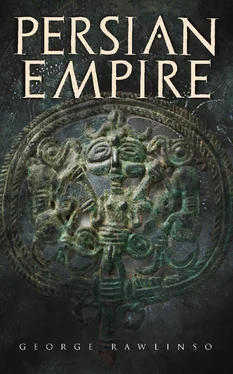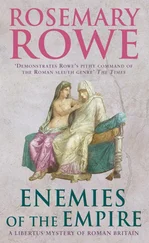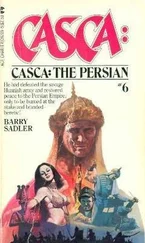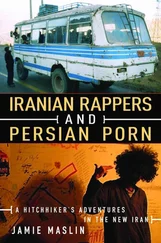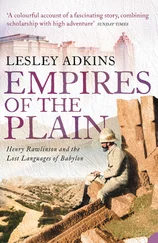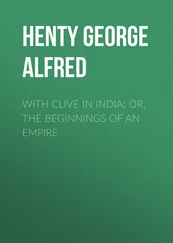George Rawlinson - Persian Empire
Здесь есть возможность читать онлайн «George Rawlinson - Persian Empire» — ознакомительный отрывок электронной книги совершенно бесплатно, а после прочтения отрывка купить полную версию. В некоторых случаях можно слушать аудио, скачать через торрент в формате fb2 и присутствует краткое содержание. Жанр: unrecognised, на английском языке. Описание произведения, (предисловие) а так же отзывы посетителей доступны на портале библиотеки ЛибКат.
- Название:Persian Empire
- Автор:
- Жанр:
- Год:неизвестен
- ISBN:нет данных
- Рейтинг книги:3 / 5. Голосов: 1
-
Избранное:Добавить в избранное
- Отзывы:
-
Ваша оценка:
- 60
- 1
- 2
- 3
- 4
- 5
Persian Empire: краткое содержание, описание и аннотация
Предлагаем к чтению аннотацию, описание, краткое содержание или предисловие (зависит от того, что написал сам автор книги «Persian Empire»). Если вы не нашли необходимую информацию о книге — напишите в комментариях, мы постараемся отыскать её.
Contents:
Extent of the Empire.
Climate and Productions.
Character, Manners and Customs.
Language and Writing.
Architecture and Other Arts.
Religion.
Chronology and History.
Persian Empire — читать онлайн ознакомительный отрывок
Ниже представлен текст книги, разбитый по страницам. Система сохранения места последней прочитанной страницы, позволяет с удобством читать онлайн бесплатно книгу «Persian Empire», без необходимости каждый раз заново искать на чём Вы остановились. Поставьте закладку, и сможете в любой момент перейти на страницу, на которой закончили чтение.
Интервал:
Закладка:
The northern lowland, which consisted of a somewhat narrow strip of land between the plateau and the Euxine, was a rich and well-wooded region, 630 miles in length, and in breadth from forty to a hundred. It was inhabited by a large number of rude and barbarous tribes, each of whom possessed a small portion of the sea-board. These tribes, enumerated in the order of their occurrence from east to west, were the following: the Moschi, the Macrones (or Tzani), the Mosy-noeci, the Mares, the Tibareni, the Chalybes, the Paphlagones, the Mariandyni, the Bithyni, and the Thyni. The Moschi, Macrones, Mosynoeci, Mares, and Tibareni dwelt towards the east, occupying the coast from Batoum to Ordou. The Chalybes inhabited the tract immediately adjoining on Sinope. The Paphlagonians held the rest of the coast from the mouth of the Kizil-Irmak to Cape Baba, where they were succeeded by the Mariandyni, who owned the small tract between Cape Baba and the mouth of the Sakkariyeh (Sangarius). From the Sangarius to the canal of Constantinople dwelt the Thynians and Bithynians intermixed, the former however affecting the coast and the latter the interior of the country. The entire tract was of a nearly uniform character, consisting of wooded spurs from the northern mountain-chain, with, valleys of greater or less width between them. Streams were numerous, and vegetation was consequently rich; but it may be doubted whether the climate was healthy.
The western lowland comprised the inland regions of Mysia, Lydia, and Caria, together with the coast-tracts which had been occupied by immigrant Greeks, and which were known as Juolis, Doris, and Ionia. The broad and rich plains, the open valleys, the fair grassy mountains, the noble trees, the numerous and copious rivers of this district are too well known to need description here. The western portion of Asia Minor is a terrestrial paradise, well deserving the praises which Herodotus with patriotic enthusiasm bestowed upon it. The climate is delightful, only that it is somewhat too luxurious; the soil is rich and varied in quality; the vegetable productions are abundant; and the mountains, at any rate anciently, possessed mineral treasures of great value.
The lowland upon the south is narrower and more mountainous than either of the others. It comprised three countries only—Lycia, Pamphylia, and Cilicia. The tract is chiefly occupied by spurs from Taurus, between which lie warm and richly wooded valleys. In Lycia, however, the mountain-ridges embrace some extensive uplands, on a level not much inferior to that of the central plateau itself, while in Pamphylia and Cilicia are two or three low alluvial plains of tolerable extent and of great fertility. Of these the most remarkable is that near Tarsus, formed by the three streams of the Cydnus, the Sarus, and the Pyramus, which extends along the coast a distance of forty miles and reaches inland about thirty, the region which gave to the tract where it occurs the name of Cilicia Campestris or Pedias.
The Persian dominion in this quarter was not bounded by sea. Opposite to Cilicia lay the large and important island of Cyprus, which was included in the territories of the Great King from the time of Cambyses to the close of the Empire. Further to the west, Rhodes, Cos, Samos, Chios, Lesbos, Tenedos, Lemnus, Imbrus, Samothrace, Thasos, and most of the islands of the Egean were for a time Persian, but were never grasped with such firmness as to be a source of real strength to their conquerors. The same may be said of Thrace and Pseonia, subjugated under Darius, and held for some twenty or thirty years, but not assimilated, not brought into the condition of provinces, and therefore rather a drain upon the Empire than an addition to its resources. It seems unnecessary to lengthen out this description of the Persian territories by giving an account of countries and islands, whose connection with the Empire was at once so slight and so temporary.
A few words must, however, be said respecting Cyprus. This island, which is 140 miles long from Bafa (Paphos) to Cape Andrea, with an average width for two thirds of its length of thirty-five, and for the remaining third of about six or seven miles, is a mountainous tract, picturesque and varied, containing numerous slopes, and a few plains, well fitted for cultivation. According to Eratosthenes it was in the more ancient times richly wooded, but was gradually cleared by human labor. Its soil was productive, and particularly well suited for the vine and the olive. It grew also sufficient corn for its own use. But its special value arose from its mineral products. The copper mines near Tamasus were enormously productive, and the ore thence derived so preponderated over all other supplies that the later Romans came to use the word Cyprium for the metal generally—whence the names by which it is even now known in most of the languages of modern Europe. On the whole Cyprus was considered inferior to no known island. Besides its vegetable and mineral products, it furnished a large number of excellent sailors to the Persian fleet.
It remains to notice briefly those provinces of the south-west which had not been included within any of the preceding monarchies, and which are therefore as yet undescribed in these volumes. These provinces are the African, and may be best considered under the three heads of Egypt, Libya, and the Cyrenaica.
Egypt, if we include under the name not merely the Nile valley and the Delta, but the entire tract interposed between the Libyan Desert on the one side and the Arabian Gulf or Red Sea on the other, is a country of nearly the size of Italy. It measures 520 miles from Elephantine to the Mediterranean, and has an average width of 150 or 160 miles. It must thus contain an area of about 80,000 square miles. Of this space, however, at least three fourths is valueless, consisting of bare rocky mountain or dry sandy plain. It is only along the course of the narrow valley in which the Nile flows from the Cataracts to beyond Cairo, in the tract known as the Faioum, and in the broad region of the Delta, that cultivation is possible. Even in the Delta itself there are large spaces which are arid, and others which are permanent marshes, so that considerable portions of its surface are unfitted for husbandry. But if the quantity of cultivable land is thus limited in Egypt, the quality is so excellent, in consequence of the alluvial character of the soil, that the country was always in ancient times a sort of granary of the world. The noble river, bringing annually a fresh deposit of the richest soil, and furnishing a supply of water, which is sufficient, if carefully husbanded, to produce a succession of luxuriant crops throughout the year, makes Egypt—what it is even at the present day—one of the most fertile portions of the earth’s surface—a land of varied products, all excellent—but especially a land of corn, to which the principal nations of the world looked for their supplies, either regularly, or at any rate in times of difficulty.
West of Egypt was a dry and sandy tract, dotted with oases, but otherwise only habitable along the shore, which in the time of the Persian Empire was occupied by a number of wild tribes who were mostly in the lowest condition to which savage man is capable of sinking. The geographical extent of this tract was large, exceeding considerably that of Egypt; but its value was slight. Naturally, it produced nothing but dates and hides. The inhumanity of the inhabitants made it, however, further productive of a commodity, which, until the world is christianized, will probably always be regarded as one of high value—the commodity of negro slaves, which were procured in the Sahara by slave-hunts, and perhaps by purchase in Nigritia.
Still further to the west, and forming the boundary of the Empire in this direction, lay the district of the Cyrenaica, a tract of singular fertility and beauty. Between Benghazi, in east longitude 20°, and the Ras al Tynn (long. 23° 15’), there rises above the level of the adjacent regions an extensive table land, which, attracting the vapors that float over the Mediterranean, condenses them, and so abounds with springs and rills. A general freshness and greenness, with rich vegetation in places, is the consequence. Olives, figs, carobs, junipers, oleanders, cypresses, cedars, myrtles, arbutus-trees, cover the flanks of the plateau and the hollows which break its surface, while the remainder is suitable alike for the cultivation of cereals and for pasturage. Nature has also made the region a special gift in the laserpitium or silphium, which was regarded by the ancients as at once a delicacy and a plant of great medicinal power, and which added largely to the value of the country.
Читать дальшеИнтервал:
Закладка:
Похожие книги на «Persian Empire»
Представляем Вашему вниманию похожие книги на «Persian Empire» списком для выбора. Мы отобрали схожую по названию и смыслу литературу в надежде предоставить читателям больше вариантов отыскать новые, интересные, ещё непрочитанные произведения.
Обсуждение, отзывы о книге «Persian Empire» и просто собственные мнения читателей. Оставьте ваши комментарии, напишите, что Вы думаете о произведении, его смысле или главных героях. Укажите что конкретно понравилось, а что нет, и почему Вы так считаете.
